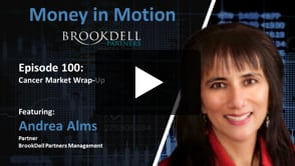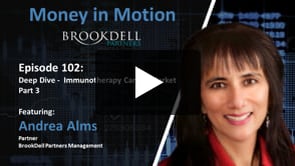Managed Futures Dashboard:
Top Managed Futures News, Listings, Member Posts, Managed Futures Daily Indices and more!
One of the best follows on non-financial Twitter is Salesforce.com’s Chief Digital Evangelist: Vala Ashsfar. He comes up with inspiring lists highlighting what it means to be a good mentor, what money can’t buy (happy home, manners, etc.), and companies founded by immigrants (Apple, Google, Amazon to name a few). Not to mention his mesmerizing videos of things like how chicken wire is made, machines sorting parts, and harvesting olives. But the meat of his feed deals with the ever-expanding use of new technologies, and especially AI’s future role:
Artificial intelligence (AI) has moved way past the buzz. Companies are adopting AI — and fast. The numbers don’t lie. According to the Accenture Technology Vision 2018 forecast, four out of five executives (81%) believe that within the next two years, AI will work next to humans in their organizations, as a co-worker, collaborator, and trusted advisor. The most common application of AI for business will use machine or deep learning to automatically analyze big data: 3 AI Trend Sales Can’t Ignore – Vala Afshar
But this technological revolution is not just for automated driving and making sure the website you’re on shows you the pink socks you may be interested in. This has BIG implications in the world of investments. It turns out our quants can’t get around to do the really heavy lifting they need/want to do without the use of artificial intelligence (AI).
“…AI and finance are made for one another, one could even go further and call them “soul mates.” Machine Learning and different techniques created new systems to spot patterns which the human brain is not capable of, and since finance is quantitative, to start with, it’s laborious not to notice traction. Financial corporations have conjointly endowed heavily in AI in the past, and many others are starting to investigate and implement the financial applications of machine learning (ML) and deep learning to their operations. The conjunction of Artificial Intelligence and Stock Trading, for instance, [has] unfortunately been mostly restricted to giant corporations. Luckily, this reality is changing as AI becomes more mainstream.” – Data Driven Investor
Here’s another piece shared by Mr. Ashfar showing the forecasted revenue over the 10 years ending in 2025. Notice that second largest “use case” is $7.5 Billion worth of revenue coming out of Algorithmic trading strategy performance improvement via AI. (See Fig. 2 below)
-
Now, that’s a bit of an odd thing to be up there amongst the others. But not because it won’t be huge. They’re even doing TED talks about how AI is going to dominate hedge funds, so you know that means it’s going to be big. But more so because its unlikely hedge funds spend that much on third-party solutions for doing such. They typically bring that sort of development in house, for fear of someone else discovering the golden goose on their dime.
Here’s some detail on how one of the world’s largest fund managers, MAN AHL, tiptoed their way into trading via artificial intelligence (via Bloomberg):
The program stayed in quarantine until 2014, when a senior portfolio manager with a Ph.D. in mathematical logic named Nick Granger decided it was time to take it out of testing. He gave the AI system a small amount of money from a portfolio he was managing—then more, then more again. At each step, the program was profitable. “It withstood everything we threw at it,” says Granger, who has a bookish demeanor, with short blond hair, squinty eyes, and rectangular dark-rimmed glasses. “We couldn’t break it.”
Over time, Granger built up the firm’s confidence in the technology. By 2015, artificial intelligence was contributing roughly half the profits in one of Man’s biggest funds, the AHL Dimension Programme that now manages $5.1 billion, even though AI had control over only a small proportion of overall assets.
The firm has gone from viewing AI with skepticism to making it a cornerstone strategy. Among the company’s biggest expenditures now is computer equipment—along with hiring engineers to keep up with the technological change and the ensuing growth. AI is now not only out of the nuclear bunker but on a pedestal. “It went from a total isolation to ‘OK, you are allowed to sit at dinner with the rest of us, but don’t talk’ to the point where it’s become a part of the family,” Ellis says.
But not every firm has the time and resources to adapt their entire investment structure to machine learning and artificial intelligence. Even MAN admits that they were weary of it and didn’t speak of it to clients until it started to perform. But if the current trajectory stays the ways it is, we might soon see a day where every firm, every coder, every household has a quant. That’s the take from a paper last year titled, The Intelligent Investor in an Era of Autonomous Learning, by Jeffrey Tarrant, CEO and Founder of New York-based investment firm MOV37, which detailed the rapid arc of AI capabilities, saying it will bring about the third wave of investment management, per knect365.com.
The idea behind Autonomous Learning Investment Strategies (ALIS) is that the coming together of man, machine and data science is set to create the ‘third wave’ of investment management. The first wave was fundamental discretionary investors, says Tarrant. The second wave was systematic quantitative managers who used hypothesis-driven programming and structured financial data. The third wave is ALIS managers who use machine learning, which is typically data (rather than hypothesis) driven using unstructured and non-financial data.
But is the promise of AI more than the delivery? The recent performance of AI funds vs traditional hedge funds in Fig. 3 below may say so. It’s one thing to have computers design their own quantitative strategies by analyzing reams of data. It’s quite another for those strategies to deliver on a walk forward basis. Typically, these AI strategies are working on probabilities, and will identify a model as “good” if it has a positive expectancy. That can mean it makes an average of $1 per trade and averages a winning percentage of 50.5%. That is a long term winner, but isn’t likely to get many real humans out of bed.
-
For more on quant hedge funds, AI, and algorithmic trading in general, check out our Decoding the World of Quants, Algorithms, and AI whitepaper.
Today's Managed Futures Headlines:
Access Over 250K+ Industry Headlines, Posts and Updates
Join AlphaMaven
The Premier Alternative Investment
Research and Due Diligence Platform for Investors
Free Membership for Qualified Investors and Industry Participants
- Easily Customize Content to Match Your Investment Preferences
- Breaking News 24/7/365
- Daily Newsletter & Indices
- Alternative Investment Listings & LeaderBoards
- Industry Research, Due Diligence, Videos, Webinars, Events, Press Releases, Market Commentary, Newsletters, Fact Sheets, Presentations, Investment Mandates, Video PitchBooks & More!
- Company Directory
- Contact Directory
- Member Posts & Publications
- Alpha University Video Series to Expand Investor Knowledge
- AUM Accelerator Program (designed for investment managers)
- Over 450K+ Industry Headlines, Posts and Updates







